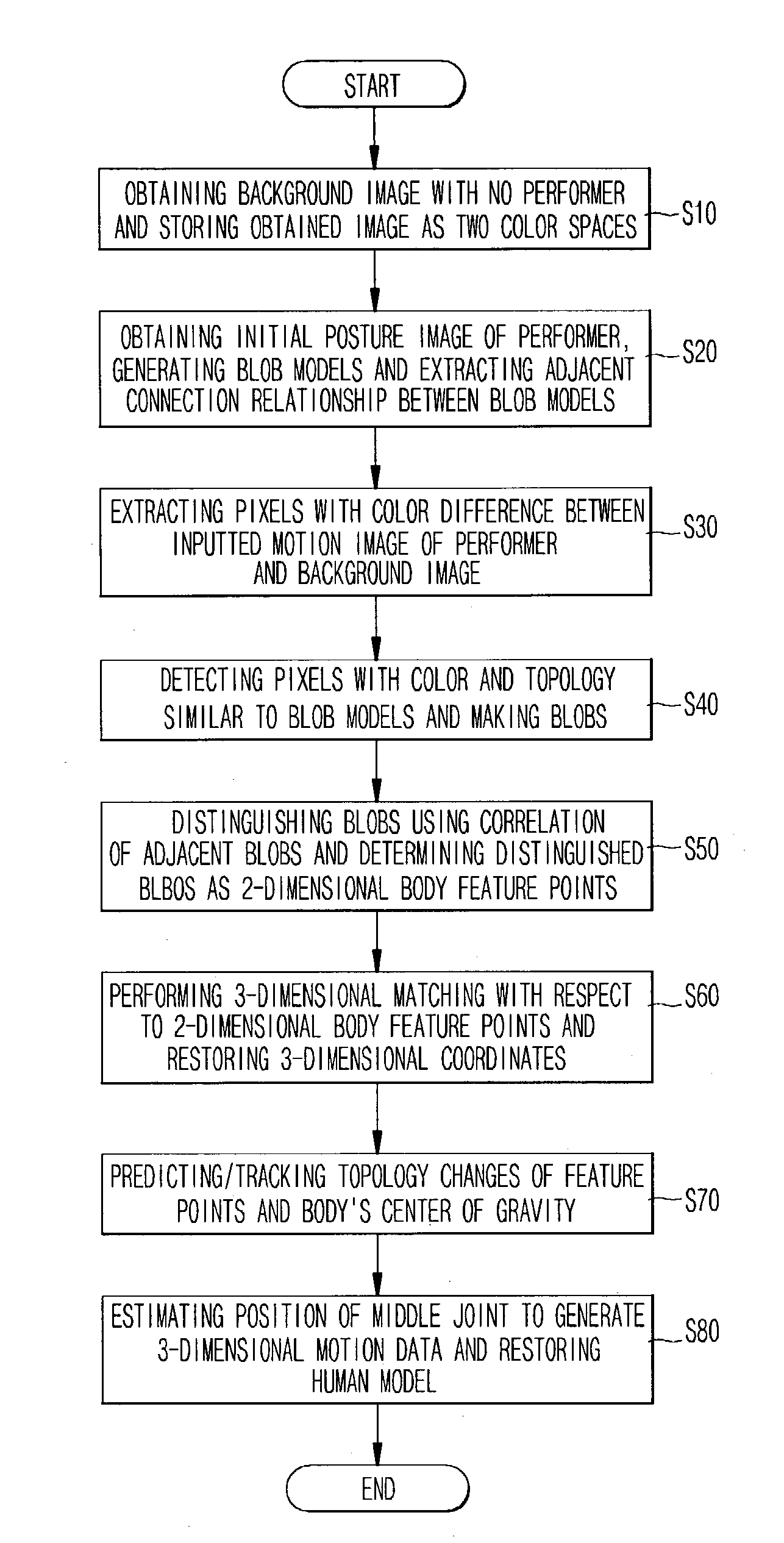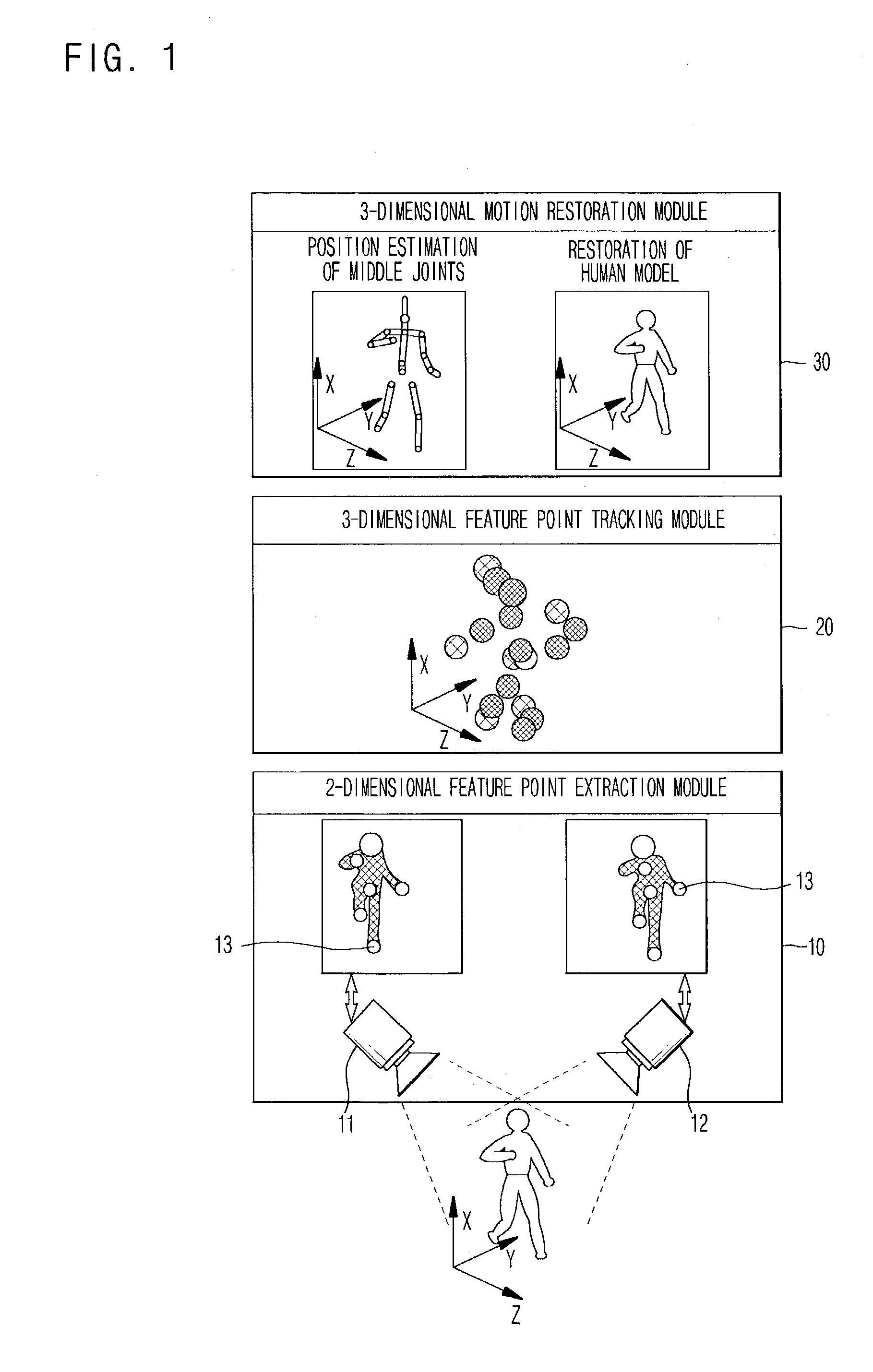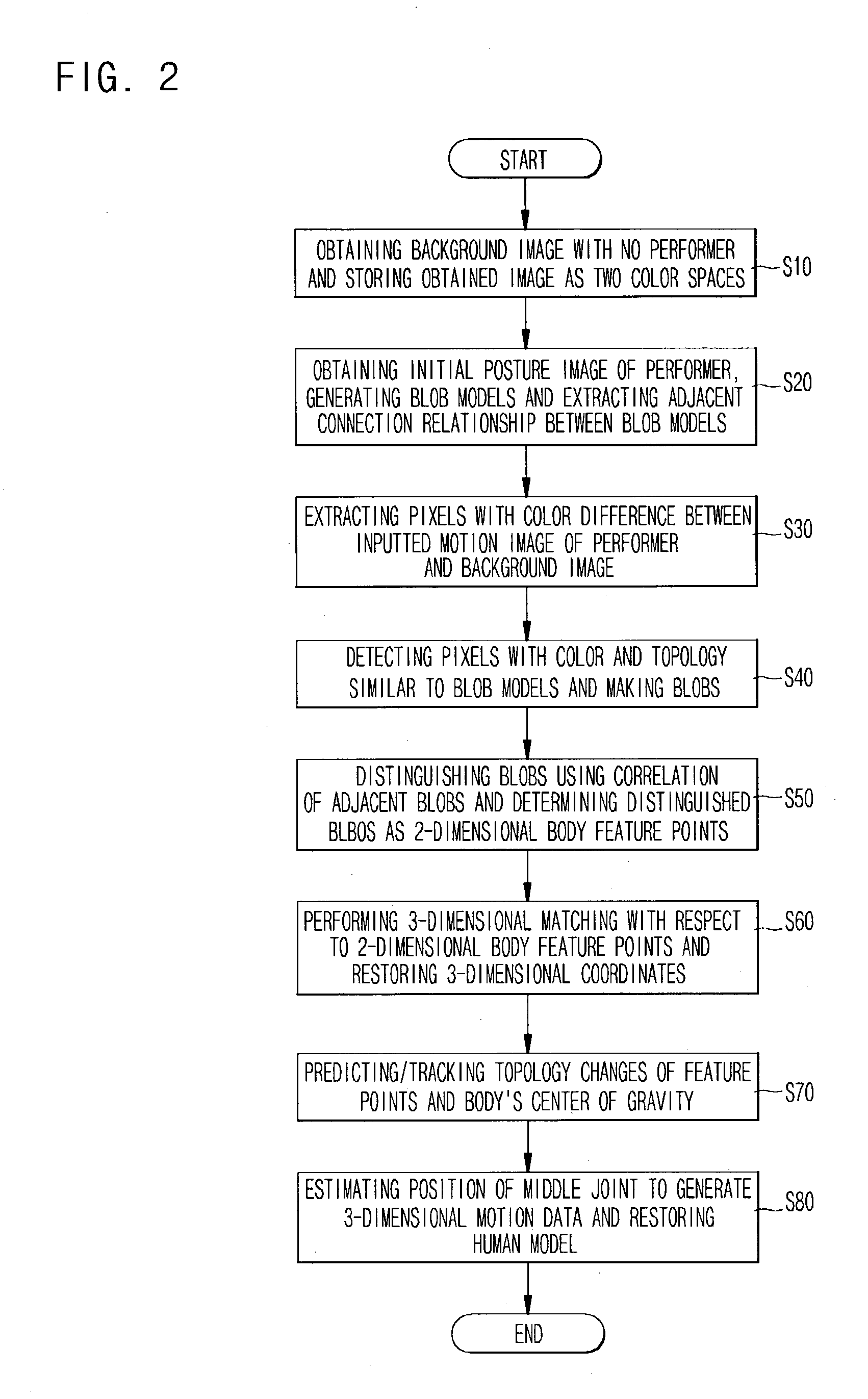Apparatus and method for high-speed marker-free motion capture
a marker-free, motion-capture technology, applied in the field of motion-capture apparatus and methods, can solve the problems of conventional motion-capture techniques, sensors or makers must be attached to actors' clothes or bodies, and operate under limited space and illumination conditions, and achieve the effect of stably tracking
- Summary
- Abstract
- Description
- Claims
- Application Information
AI Technical Summary
Benefits of technology
Problems solved by technology
Method used
Image
Examples
Embodiment Construction
[0022]Reference will now be made in detail to the preferred embodiments of the present invention, examples of which are illustrated in the accompanying drawings. Wherever possible, the same reference numbers will be used throughout the drawings to refer to the same or like parts.
[0023]Referring to FIG. 1, using a plurality of cameras 11 and 12 having different viewing angles from each other, a 2-dimensional feature point extraction module 10 obtains an image with respect to a background in which there is no actor and then stores the obtained image as RGB color space having a characteristic which can easily emphasize color difference and HSI color space having a characteristic which can easily emphasize color similarity. Then, the 2-dimensional feature point extraction module 10 obtains an image with respect to an initial posture of the actor and makes blob models with respect to a head, hands, feet, trunk, arms and legs. The 2-dimensional feature point extraction module 10 extracts ...
PUM
 Login to View More
Login to View More Abstract
Description
Claims
Application Information
 Login to View More
Login to View More - R&D
- Intellectual Property
- Life Sciences
- Materials
- Tech Scout
- Unparalleled Data Quality
- Higher Quality Content
- 60% Fewer Hallucinations
Browse by: Latest US Patents, China's latest patents, Technical Efficacy Thesaurus, Application Domain, Technology Topic, Popular Technical Reports.
© 2025 PatSnap. All rights reserved.Legal|Privacy policy|Modern Slavery Act Transparency Statement|Sitemap|About US| Contact US: help@patsnap.com



